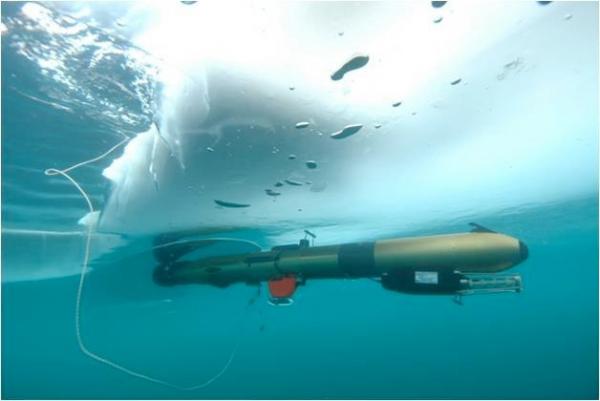Underwater Robot to Explore Ice-Covered Antarctic Ocean


An underwater robot will get an up-close look at Antarctica's ice shelf and ice-covered ocean over the next month. The robot's mission will be to map, measure and retrieve samples from the rapidly changing icy waters around Antarctica.
Scientists predict that the sea ice around Antarctica will shrink by more than 33 percent by 2100, accelerating the collapse of ice shelves and mucking with the circulation of the oceans . The deep-diving robot will study how ice shelves giant floating platforms of ice factor into the mixing of seawater.
"Under-ice datasets will allow us to better understand ice-ocean interactions and provide valuable information for climate modelers," said Craig Stevens, who worked as a postdoctoral researcher at the University of British Columbia (UBC) in Vancouver, Canada, in the early 1990s. Stevens is now at the New Zealand National Institute for Water and Atmospheric Research.
Until recently, the ice-covered waters have blocked scientists' prying eyes, but the research team's use of a high-tech robot aims to change that.
"Few labs in the world are able to investigate the spatial variability of ocean properties under ice," said Bernard Laval, a study team member from UBC.
The scientists will set up shop at New Zealand's Ross Dependency in Antarctica where they will deploy the robot, known as an Autonomous Underwater Vehicle , or AUV, on a one-of-a-kind mission.
"Findings from this study will be unique as there have only been a few under-ice AUV deployments globally, even fewer in the vicinity of ice shelves," Laval said.
Get the world’s most fascinating discoveries delivered straight to your inbox.
The AUV, named UBC-Gavia, measures 8 feet (2.5 meters) long by 1.6 feet (0.5 meters) wide and is fully loaded with a battery of high-tech instruments for measuring and mapping the water. Gavia will plunge into the deep, cold waters adjacent to, and possibly under, the floating 330-foot- (100-meter-) thick Erebus Glacier Tongue in McMurdo Sound, Antarctica. The AUV is loaded with mission instructions flight path, depth, what sensors to activate and when and will then deploy under the ice to collect data on its own, returning to the ice-hole at the end of the mission.
"The deployments are expected to return important data from a largely uncharted ocean environment," said Andrew Hamilton, study team member and engineer at UBC.
The AUV will survey the ice-covered ocean waters in Antarctica from Oct. 17 through Nov. 12 and data from the mission will be available to other scientists studying the dynamics in of the region.



